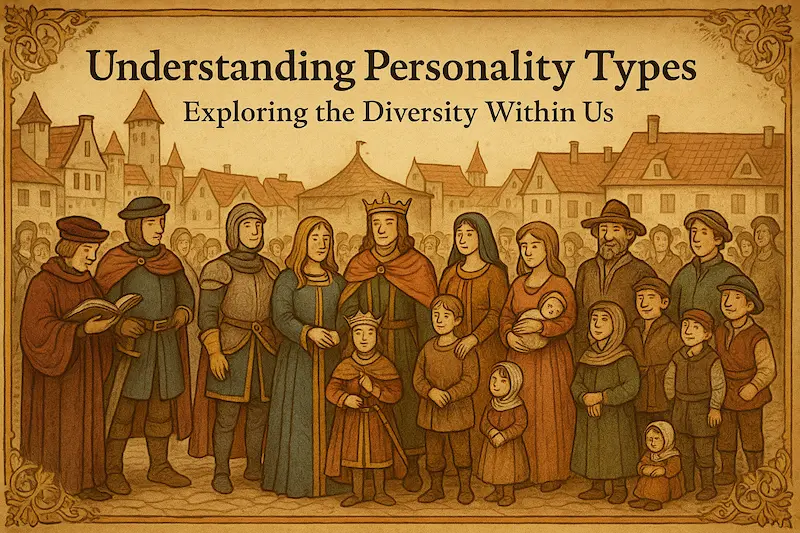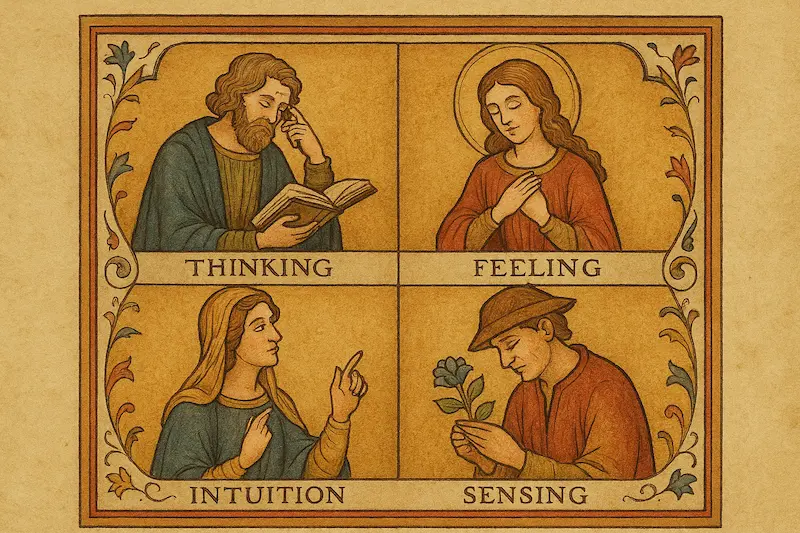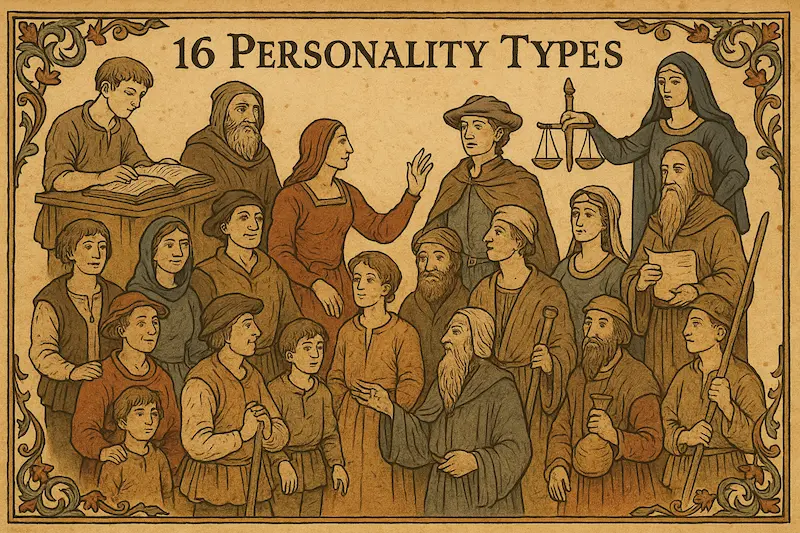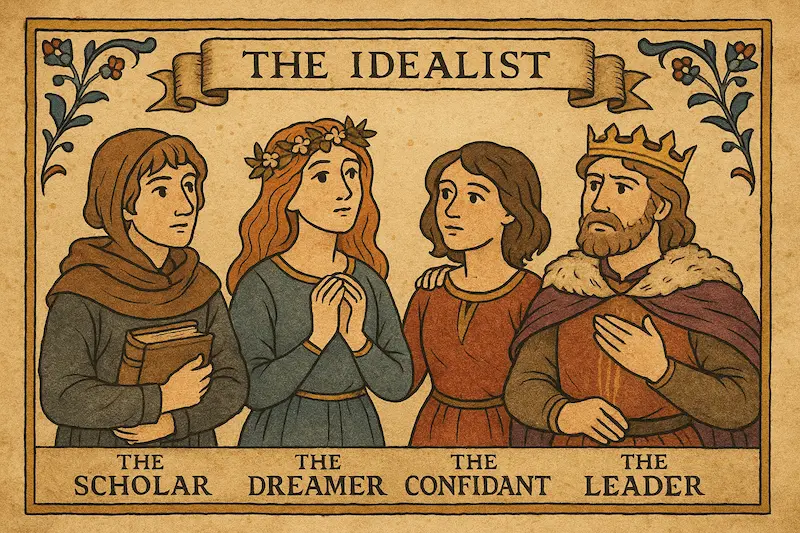How to Find Out Your Personality Type (Beginner-Friendly Guide & Free Test)

What Personality Types Are—and Why They Matter
“Personality type” is simply a practical way to describe the patterns you already live every day. Some people refuel by talking things out; others gain energy from quiet focus. Some trust concrete facts; others instinctively look for patterns. These differences show up at work, at home, and in the smallest habits—how you plan a weekend, give feedback, or make decisions under pressure. Learning your personality type doesn’t put you in a box; it hands you a map. A good map doesn’t tell you where to go—it helps you get where you actually want to be, with fewer wrong turns and less second-guessing.
For beginners, the nicest surprise is how accessible this is. You don’t need a psychology degree or a long attention span. A clear, beginner-friendly test uses simple statements about everyday life—how you prefer to work, socialize, organize, and decide—and then translates your answers into a profile you can actually use. If you’ve ever wondered, “How do I find out my personality type without getting lost in jargon?” this guide is for you.
A Beginner’s Guide to MBTI: Where It Came From and What It Does
The MBTI framework grew from the work of Katharine Cook Briggs and Isabel Briggs Myers, who adapted ideas from Carl Jung into a tool people could use in real life. It was created to help match individuals with roles and environments where they’d thrive—not to judge, rank, or “fix” anyone. That intention matters. When you see your result, you’re not being graded; you’re being given language for preferences you already feel. Think of it as a lens that brings your strengths and stress points into focus so you can make better, kinder choices—toward yourself and with others.
MBTI describes preferences along four pairs: how you get energy, how you take in information, how you make decisions, and how you like your outer world organized. Your result combines those preferences into a four-letter code pointing to one of sixteen types. The letters are shorthand, but the value is in the explanation: how those preferences interact in real life—at your desk, in conflict, on a deadline, on a date.

The Four Preference Pairs (Explained Simply)
Every beginner asks the same question: “What do the letters actually mean?” Here’s a plain-language tour without the jargon. Extraversion and Introversion describe where you naturally refuel—by engaging outward with people and activity, or by turning inward to focus and reflect. Sensing and Intuition describe how you pay attention—favoring what’s tangible, present, and proven, or scanning for patterns, possibilities, and “what could be next.” Thinking and Feeling describe how you like to decide—prioritizing impersonal logic and consistent criteria, or weighing people, values, and impact first. Judging and Perceiving describe how you prefer your outer life to run—enjoying clear plans and closure, or keeping options open and adapting as you go.
Most people aren’t extremes, and that’s the point. You’ll recognize yourself not because every sentence fits, but because a pattern emerges. When you’re calm and being most yourself, you lean one way. Under stress, you might lean the other. A good test and a clear explanation help you see the default settings so you can use them on purpose, not by accident.
What a Free Personality Test Can—and Can’t—Tell You
A reliable free test is a strong starting point. It collects your responses across many small questions and looks for consistent themes. That pattern is far more telling than any single answer. What the test can do is give you vocabulary for your preferences and a practical overview you can try in real life. What it can’t do is predict your future, excuse bad behavior, or capture the whole of a complex human in four letters. Treat results as a working hypothesis: useful because they generate experiments. If your type suggests you thrive with uninterrupted focus, try one protected hour each morning for a week and see if your output and calm improve. If it suggests you recharge in solitude, schedule short recovery time after social marathons. Usefulness—not perfection—is the right definition of “accuracy” here.

How to Take a Personality Type Test the Right Way (For Absolute Beginners)
You’ll get the clearest result when you answer for your “most of the time” self, not your “ideal” self or your “work persona.” Choose a quiet moment, breathe, and go with your first honest instinct on each item. If two options both sound like you, ask which one is more natural when life is calm and you’re not trying to impress anyone. Don’t overthink; the power is in the pattern across answers, not in any single choice. And avoid taking multiple tests in a row—your second attempt tends to be a reaction to the first. One clean pass is better than three noisy ones.
Making Sense of Your Result Without Overthinking It
When you see your four letters, open the short profile that explains what they look like in daily life. Beginners often feel both recognition and curiosity. Recognition, because traits that once felt like quirks now look like consistent preferences with names. Curiosity, because you’ll want to know how those preferences play out at work, in conversations, under deadlines, and at home. Read slowly and mark phrases that hit home. If something feels off, give it a week. Context—new roles, stress, culture—can temporarily mask your preferences. Let your everyday behavior be the tie-breaker. If you’re still torn between two types, compare their day-to-day descriptions and test one practical tip from each. The one that fits like a glove will make itself known in your results and your energy.
How Personality Types Help at Work, in Relationships, and in Personal Growth
This is where the map earns its keep. At work, knowing your type helps you line up tasks with strengths, set boundaries that protect your energy, and communicate in a way that actually lands. A big-picture intuitive might reserve time for strategy before diving into details, while a detail-loving sensor might build checklists and close loops early. A thinker may draft feedback that’s clear and structured; a feeler may open with context and care—both can aim for honest and kind. In relationships, personalities are like dialects. When you know yours and your partner’s, you stop taking differences personally. If you recharge alone after a crowded day, you can explain that it’s how you love well tomorrow, not a withdrawal of affection. If your partner needs to talk things out to think, you’ll give them the space to process out loud without assuming they’re being indecisive.
For growth, your type suggests low-friction habits and high-leverage experiments. If you’re naturally plan-oriented, a weekly review can feel like oxygen. If you prefer flexibility, building open blocks in your calendar lets curiosity do its best work. If your decisions tilt toward logic, practicing “name the feeling before the fix” can soften sharp edges; if you lead with values, practicing “name the criteria before the choice” can sharpen clarity. None of this is about becoming someone else. It’s about steering with the grain of who you are so effort turns into progress.

Common Misconceptions Newcomers Should Ignore
Three myths waste beginners’ time. First, the idea that one type is “best.” That’s like asking which tool is best without naming the task. Teams, families, and communities need variety—vision and execution, candor and care, plans and improvisation. Second, the fear that your type traps you. Preference isn’t fate. You can write with your non-dominant hand; it’s just slower. In the same way, you can absolutely do what doesn’t come naturally—you’ll simply budget more energy for it. Third, the worry that a free personality type test can’t be useful. Usefulness shows up in better weeks, easier conversations, and clearer choices. If your results help you change tomorrow’s schedule for the better, the tool worked.
How MBTI and Zodiac Can Complement Each Other (Optional—but Fun)
On WhatZodiac, many readers enjoy layering their personality type with their zodiac sign. MBTI focuses on cognitive preferences—how you gather information and make decisions—while zodiac offers a symbolic lens on temperament and life themes. You don’t need to pick teams. If both lenses highlight your love for structure, you’ll double down on planning habits and likely feel calmer and more effective. If one emphasizes flexibility while the other emphasizes order, that tension may be your creative sweet spot. After you take the test, explore your combined Type + Zodiac page to see which insights repeat and which ones balance each other in helpful ways. The goal isn’t to collect labels—it’s to gather tools you can put to work.
How to Use Your Type Immediately: One Week of Practical Experiments
Turn insight into traction with small, testable changes. Choose one work habit, one communication tweak, and one energy ritual that align with your preferences, and try them for a week. A focus-oriented introvert might block thirty minutes after meetings to synthesize notes before commitments harden. A big-picture intuitive might preview the “why” of a project before discussing the “how,” so the details stick to a meaningful frame. A feeler might write draft feedback, sleep on it, and send it after a gentle pass that preserves honesty; a thinker might write their decision criteria first, then choose. Track how your energy, results, and relationships respond. Keep what works; adjust what doesn’t. Your type becomes more accurate as you use it—because the proof is in your calendar, not just in your letters.
A Note on Ethics, Labels, and Respect
Personality language should always be used with care. It’s a mirror, not a weapon. Avoid diagnosing strangers, justifying poor behavior, or expecting others to communicate exactly like you. The most respectful use of type is self-awareness first, invitation second: “Here’s how I work best—how about you?” In healthy teams and relationships, people learn each other’s preferences and build systems that honor difference. That’s where this becomes more than a quiz—it becomes a kinder, clearer way of working and living together.
Ready to Find Out Your Personality Type? Start Here
If you’re new to all of this, the simplest next step is also the most powerful: take a clean, beginner-friendly assessment built to explain results in plain language. Our free MBTI-style test on WhatZodiac keeps the questions simple and the explanations practical, so your result turns into actions you can try this week. Answer for your “most of the time” self, read your concise profile, and then explore your combined Type + Zodiac insight for a richer picture. Fifteen minutes from now, you’ll have a clearer map—and a kinder way to navigate your work, relationships, and personal growth.
Tap the button below to begin your journey. When you’ve finished, come back and tell us what surprised you most—your answer might help someone else start theirs.
How to Find Out Your Personality Type
(Beginner-Friendly Guide & Free Test)
Take our MBTI-style personality test and see how your results pair with your zodiac sign.